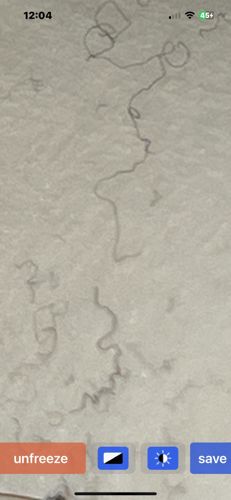Snail or Slug trail
Scientific Name: Gastropoda (Class)
Order & Family: Stylommatophora (Order) - (for most terrestrial snails/slugs)
Size: Trails can vary greatly depending on the size of the mollusk, from a few millimeters to several centimeters in width and length.

Natural Habitat
Damp, moist environments, gardens, under leaves, logs, stones, basements, and other cool, secluded places.
Diet & Feeding
The trail itself is not a diet, but snails and slugs feed on a variety of organic matter including decaying plant material, fungi, algae, and sometimes live plants.
Behavior Patterns
Snails and slugs produce mucus to aid in locomotion, reduce friction, and protect them from desiccation. These trails dry into the visible patterns seen in the image. They are typically nocturnal or active during damp conditions to avoid drying out.
Risks & Benefits
Risks: Can be pests in gardens, consuming ornamental and vegetable plants. Some species can carry parasites like lungworm (Angiostrongylus cantonensis) which can affect humans if ingested. Benefits: Decomposers, helping to break down organic matter and cycle nutrients back into the soil. Some species can be food sources for other animals.
Identified on: 9/17/2025